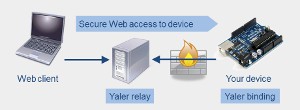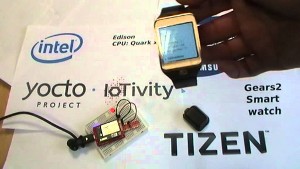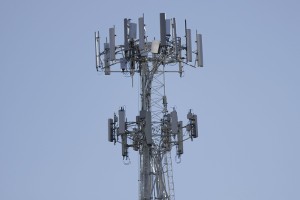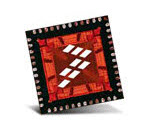Nokia, Ericsson and Intel have recently announced their combined support for a new standard called Narrow-Band Long-Term Evolution (NB-LTE), which they see as an ideal connectivity solution for the growing cellular Internet-of-Things market.
NB-LTE is an improved variant of existing 4th Generation LTE (Long-Term Evolution) mobile technology which has been optimised for low-power machine-to-machine and Internet-of-Things applications.
This new standard is NB-LTE is well suited for IoT applications – thanks to being a narrow-band cellular communications standard for applications that aren’t very data intensive – which offers low implementation cost, ease of use and good power.
NB-LTE networks operate with narrow-band 200kHz channels, meaning that existing spectrum allocations such as 2G can’t simply be re-allocated to support the new technology. However, NB-LTE can be used in shared spectrum alongside existing LTE networks.
This narrow-band approach is particularly valuable today as more and more stakeholders are using the RF spectrum, with more spectrum congestion and less unallocated space.
Nokia, Ericsson and Intel plan to work closely together to develop and bring to market infrastructure and technology that supports the uptake of the NB-LTE standard, as well as products that make use of it. These companies aim to support the building of an ecosystem around NB-LTE that accelerates its adoption, including its use in in IoT applications.
They believe that it makes sense to take advantage of the existing widespread deployment of cellular networks to support and drive IoT adoption … that the development of the NB-LTE standard helps achieve this at minimal cost through the re-use of existing infrastructure where appropriate, and that this development will bring benefits to consumers such as enhanced connectivity of devices at a lower cost.
Intel intends to support commercial rollout of the technology, providing a roadmap for their NB-LTE chipsets and product upgrades beginning in 2016 that will enable NB-LTE connectivity combined with slim form factors.
These products will add to Intel’s growing NB-LTE portfolio. Nokia and Ericsson will provide the technology needed for infrastructure upgrades, supporting an extension of existing LTE base stations and networks to NB-LTE technology.
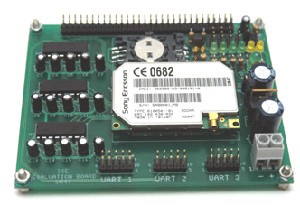
Existing 4G networks are considered to be crucial to IoT development because they’ll be around for decades – hence the Long-Term Evolution name. Using this infrastructure provides a kind of future-proofing for IoT devices, which may easily have a longer useful lifespan than a smartphone.
On the other hand, existing, 2G and 3G networks may soon be decommissioned. Taking advantage of the existing global footprint of LTE cellular infrastructure ensures a global foundation for a vast range of new cellular IoT applications for consumer and industry users, and ensures that this will be a stable foundation.
But NB-LTE doesn’t have industry-wide support, and other companies such as Huawei are putting their weight behind the existing Narrowband Cellular IoT, or NB-CIoT, standard. NB-CIoT has already gained operator support from major players such as Vodafone and China Unicom.
However, the NB-LTE standard, unlike NB-CIoT, does not require any overlay network for compatibility with existing LTE networks and chipsets. This means that NB-LTE can be more easily deployed across existing LTE networks, compared to the competing NB-CIoT standard, and this is an important advantage.
The key difference is that the NB-LTE standard makes it much easier to re-use existing LTE infrastructure – both in terms of the network infrastructure and the chipsets in end-user devices. This leads to clear advantages for the NB-LTE standard in terms of cost and deployment time.
At a recent meeting, the 3rd Generation Partnership Project (3GPP) Radio Access Network (RAN) group has looked at these different proposals and decided on a common way forward, which is important since narrowband LTE specifications are likely to play a crucial role in the development of the cellular IoT sector.
What they have agreed on is a standard called Narrowband-IoT or NB-IoT. This is a new standard that is not exactly the same as either the NB-LTE proposal or the NB-CIoT proposal, but something which seems to include the benefits of both approaches, which all stakeholders can agree on as a common standard for future IoT-friendly LTE development.
This new standard reconciles the differences between the narrowband standards being promoted by different technology vendors, and provides for low device cost, low power consumption, and an optimised network architecture with IoT applications in mind that provides improved indoor coverage, low delay sensitivity and support for a massive number of low-throughput IoT devices on the network.
Overall the Narrow-Band Long-Term Evolution standard offers a glimpse into the future of M2M devices and the Internet of Things. However if you have a wireless M2M product idea or revision requirement – we can work together to meet your needs.
Here at the LX Group we have end-to-end experience and demonstrated results in the entire process of IoT product development, and we’re ready to help bring your existing or new product ideas to life. Getting started is easy – click here to contact us, or telephone 1800 810 124.
LX is an award-winning electronics design company based in Sydney, Australia. LX services include full turnkey design, electronics, hardware, software and firmware design. LX specialises in embedded systems and wireless technologies design.
Published by LX Pty Ltd for itself and the LX Group of companies, including LX Design House, LX Solutions and LX Consulting, LX Innovations.

